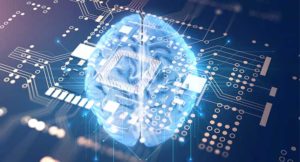AI in Manufacture

Artificial intelligence (AI) is a remarkably extensive and greatly hard to formalize idea, which, first of all, is connected with the image of light, its removal, and its consequent direction.
With all its inevitability, it enters into different fields of social action, supplementing and also displacing his general knowledge.
Plus if in several of these states the attack took position really in the last decade, then the responsibilities of manufacturing products were amongst the greatest to which rational rules were implemented, since it had a simply expected financial impact.
Main features
In the current century, expert methods, semantic and cognitive networks, frames, inference, and production rules were actively used in industrial production to work with knowledge. Rather than being replaced by machine learning methods – the notorious Business Intelligence, it was used primarily to solve prediction difficulties. Then, at the beginning of this decade, the Big Data revolution was proclaimed, which also affected the industry due to the great amount of data that is generated in the creation process.
However, it only bore fruit a few years ago, allowing us to improve understanding of the operation of enterprises, optimize production costs, monitor the efficiency of machine tools and find their breakdowns, and also optimize the range and volume of production depending on the market conditions. The assimilation of the results of this revolution by the industrial sector is only gaining momentum. However, the next revolution has already been proclaimed.
The main direction of development in the field of AI in manufacturing examples over the past few years is deep learning and deep neural networks that implement it. Initially, artificial neural networks (ANNs) offered an approach to building a universal model for learning knowledge, inspired by the architecture of the human brain.
However, for a long time, the models used were extremely simple, and only five years ago, due to the development of the algorithmic base, the increase in computing power, and the aforementioned increase in the amount of available data, there was a significant breakthrough, which made it possible to build models of unprecedented complexity.
In a short time, deep neural networks have become the standard in image, speech, and video processing. Already, under their influence, the spheres of logistics, drug development, retail, marketing, and, of course, information technology are beginning to change.
Purposes
- First, deep neural networks allow us to solve the problem of new product design. This is already beginning to be used for the development of new drugs, but it is potentially applicable to many other industries and types of products that can be optimized according to the criteria put forward. Shortly, deep neural networks will make it possible to find a new design, technological and design solutions.
- The second purpose is the formation of control circuits for automated industrial complexes. Today, the creation of control schemes is an expensive and complicated process to automate, but they can be transferred to deep neural networks.
We simply could not fail to point out robotics, since the third application is associated with it. I would like to see robots capable of independently solving emerging problems and eliminating problems. For example, solving the problem of learning behavior by observation will allow not to program robots for specific tasks, but to train them, showing the behavior required from the robot or allowing them to understand what to do while observing other robots.






